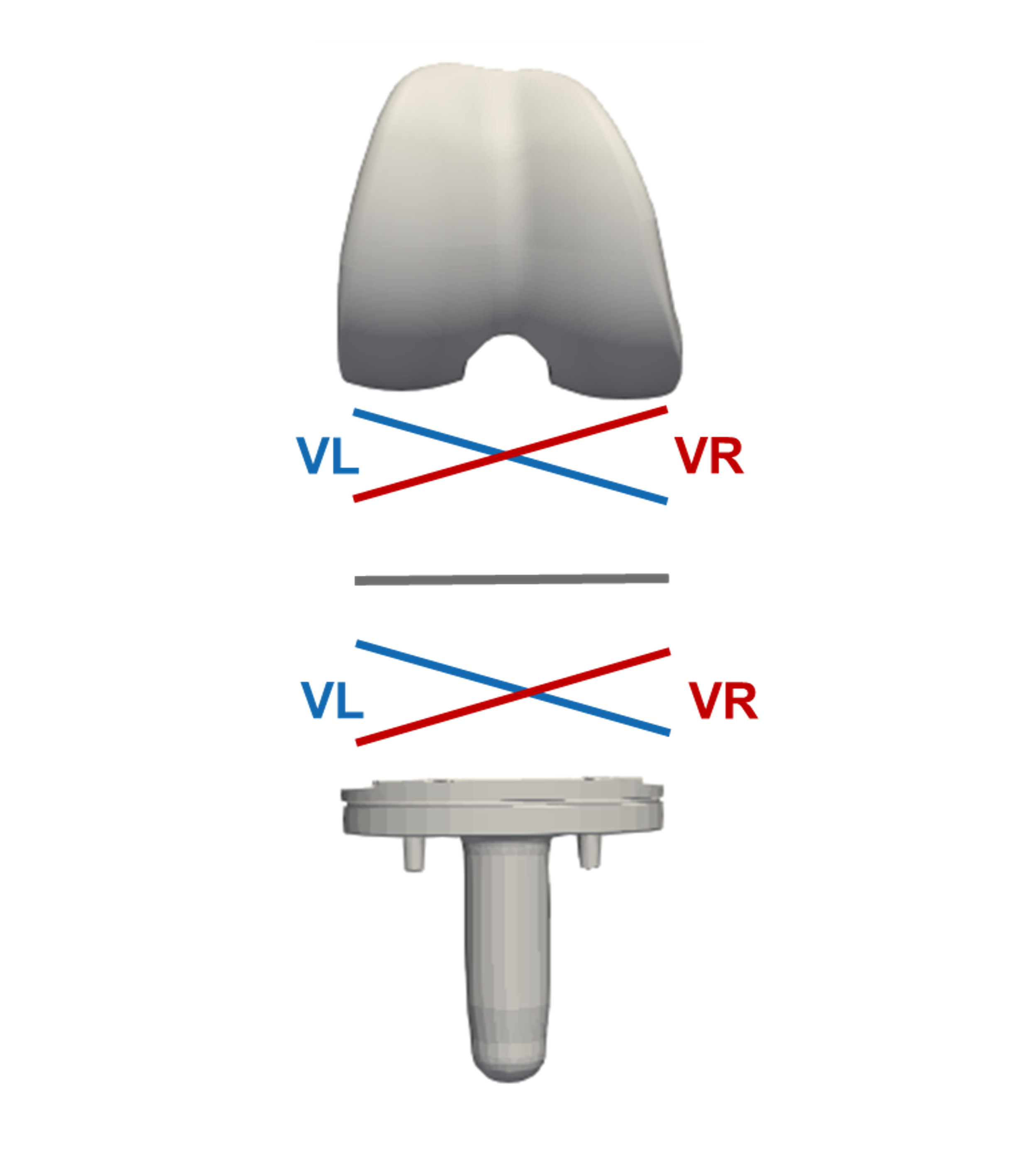Understanding the influence of implant alignment parameters on the knee function after total knee arthroplasty
Background
Total Knee Arthroplasty (TKA) is becoming more common due to an increasing prevalence of osteoarthritis and increasing life expectancy. Despite many advances in implant design, wear-resistance, and surgical precision, still around 20% of patients are not completely satisfied with the outcomes. Therefore, assessment of different soft-tissue balancing and component alignment techniques have become more important in TKA.
Goal
The goal of this project was to develop an in-silico pipeline to estimate post-TKA loading and kinematics of knee implants using a musculoskeletal modelling approach.
Method
Full-body musculoskeletal models with a detailed multibody model of the knee including 6 DOF tibiofemoral and patellofemoral joints were developed to represent TKA subjects previously measured in our lab. Using the COMAK simulation framework, with the measured motion capture and ground reaction force data as the inputs, muscle forces, ligament forces, knee kinematics, and contact mechanics were estimated throughout complete cycles of dynamic activities. The model outcomes were validated against the in vivo measured knee contact force and tibiofemoral kinematics. The modelling framework was used to investigate the influence of implant alignment and ligament tension on the movement and loading of the knee.

Collaboration
This is a collaborative project between ETH Zürich and Aesculap AG.
Contact
Professur f. Bewegungsbiomechanik
Gloriastrasse 37/ 39
8092
Zürich
Switzerland

